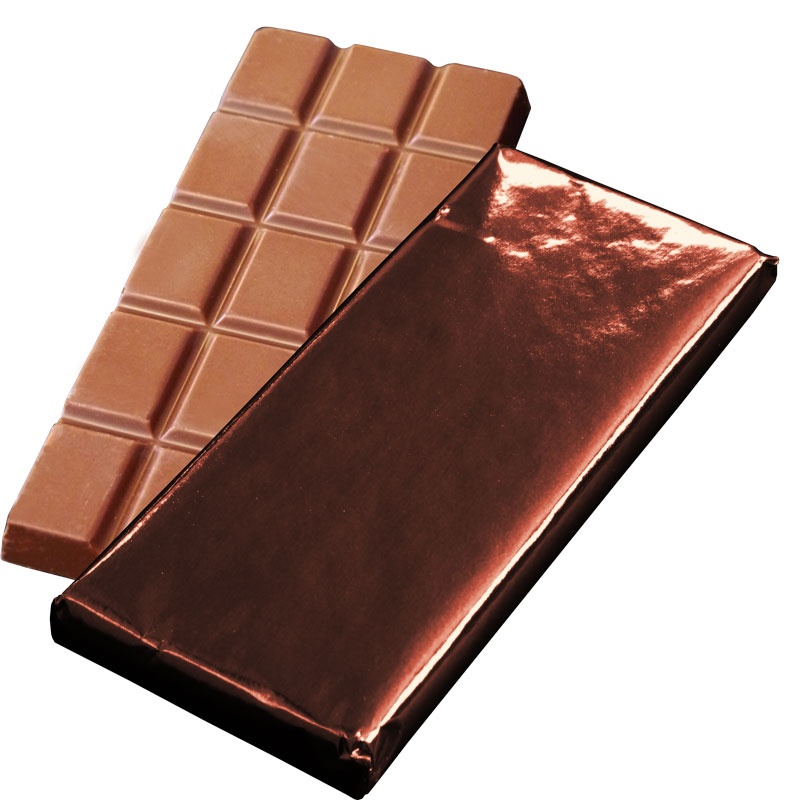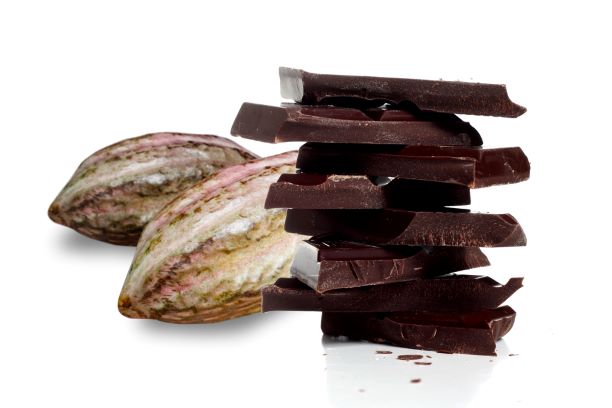Hames Chocolates talks about different grades of chocolate and do high cocoa solids mean better quality chocolate?
Hames Chocolates talks about different grades of chocolate and do high cocoa solids mean better quality chocolate?
You’d think that all milk chocolates would taste the same, the same for dark chocolates and white chocolates wouldn’t you? It’s simply not true.
Chocolate appreciation starts in childhood. Over the years we acquire our taste for chocolate and wherever you live in the world can influence the type of chocolate that we prefer as an adult. One of the reasons that we adore chocolate is that it melts at body temperature, it literally melts in your mouth. For this reason in hot countries the recipes for chocolate are often modified with vegetable fats to reduce problems with the chocolate melting and then subsequently blooming (this is where the cocoa butter crystals rise to the surface of the chocolate and give it an unsightly white finish). This version of chocolate is called compound chocolate, it doesn’t melt in the mouth and to the British consumer it’s not very nice.
In Great Britain most of us remember having one big brand of chocolate as a child and now we like that milky taste. Milk Chocolate is by far the biggest seller in the UK but we are adventurous and we like all grades of chocolate. Hames say generally there’s good chocolate and there’s better chocolate. There’s chocolate for every whim and mood.
How do you measure one chocolate bar quality against another?
We need to ask ourselves 4 questions:
Often we quite like these everyday basic chocolate bars but they are not really an example of a premium chocolate.
Cheaper chocolate sometimes has a gritty texture whereas a more premium chocolate will be smooth and silky as it has been conched for longer.
What are the minimum declared cocoa solids in chocolate and what do they matter?
Chocolate is made up of a recipe of cocoa butter and solids, milk, sugar, vanilla, and emulsifier to hold the recipe together. It is possible that in a given batch of chocolate that one part of the batch may contain slightly more cocoa solids than another part of the batch and therefore by law in the UK and in Europe we have to make a declaration on dark and milk chocolate packaging what is the minimum amount of cocoa solids that you will receive in your chocolate (this is not a requirement for white chocolate). It will often be true that the amount of cocoa solids in a chocolate will be upto 1.5% higher than is actually declared on the ingredients panel.
What are the minimum declared milk solids in chocolate and what do they matter?
Milk solids in chocolate give the chocolate that creamy, milky taste that is so essential in British (and European) milk chocolate.
But the higher the cocoa solids then the more chocolatey the taste, surely cocoa solids are more important? Yes that is partly true but imagine the scenario’s below:
Milk Chocolate Bar One: 31% cocoa solids, 14% milk solids
Milk Chocolate Bar Two: 30% cocoa solids, 18% milk solids
Dark Chocolate Bar One: 53% cocoa solids (no milk solids as dark chocolate)
Dark Chocolate Bar One: 70% cocoa solids (no milk solids as dark chocolate)
Which chocolate bar would you choose? Does high cocoa solids make for a better bar? The answer to this question is NO!
The question of milk chocolate or dark chocolate comes down to personal preference (and potential health benefits of dark chocolate) but:
A milk chocolate bar needs a good balance of cocoa solids AND milk solids to give it its creamy taste. We think that Milk Chocolate Bar Two would be nicer than Chocolate Bar One because although it contains less cocoa solids it has more milk solids giving you a creamier mouth feel.
Which of the dark chocolates would you go for? The higher cocoa solids may be too strong tasting for some whilst others crave the intense cocoa.
What about Hames Chocolates quality? What grades of chocolate do Hames offer?
Hames Chocolate offer nine core blends of chocolate and other grades by request. We can use any of these grades to make private label chocolate products from cake decorations to Easter eggs and everything in between. We can also add flavours and inclusions to create your desired chocolate.
You’d think that all milk chocolates would taste the same, the same for dark chocolates and white chocolates wouldn’t you? It’s simply not true.
Chocolate appreciation starts in childhood. Over the years we acquire our taste for chocolate and wherever you live in the world can influence the type of chocolate that we prefer as an adult. One of the reasons that we adore chocolate is that it melts at body temperature, it literally melts in your mouth. For this reason in hot countries the recipes for chocolate are often modified with vegetable fats to reduce problems with the chocolate melting and then subsequently blooming (this is where the cocoa butter crystals rise to the surface of the chocolate and give it an unsightly white finish). This version of chocolate is called compound chocolate, it doesn’t melt in the mouth and to the British consumer it’s not very nice.
In Great Britain most of us remember having one big brand of chocolate as a child and now we like that milky taste. Milk Chocolate is by far the biggest seller in the UK but we are adventurous and we like all grades of chocolate. Hames say generally there’s good chocolate and there’s better chocolate. There’s chocolate for every whim and mood.
How do you measure one chocolate bar quality against another?
We need to ask ourselves 4 questions:

- What are the minimum declared cocoa solids?
- What are the minimum declared milk solids?
- Was is the chocolate texture?
- Does the chocolate bar contain vegetable fat?
Often we quite like these everyday basic chocolate bars but they are not really an example of a premium chocolate.
Cheaper chocolate sometimes has a gritty texture whereas a more premium chocolate will be smooth and silky as it has been conched for longer.
What are the minimum declared cocoa solids in chocolate and what do they matter?
Chocolate is made up of a recipe of cocoa butter and solids, milk, sugar, vanilla, and emulsifier to hold the recipe together. It is possible that in a given batch of chocolate that one part of the batch may contain slightly more cocoa solids than another part of the batch and therefore by law in the UK and in Europe we have to make a declaration on dark and milk chocolate packaging what is the minimum amount of cocoa solids that you will receive in your chocolate (this is not a requirement for white chocolate). It will often be true that the amount of cocoa solids in a chocolate will be upto 1.5% higher than is actually declared on the ingredients panel.
What are the minimum declared milk solids in chocolate and what do they matter?
Milk solids in chocolate give the chocolate that creamy, milky taste that is so essential in British (and European) milk chocolate.
But the higher the cocoa solids then the more chocolatey the taste, surely cocoa solids are more important? Yes that is partly true but imagine the scenario’s below:
Milk Chocolate Bar One: 31% cocoa solids, 14% milk solids

Milk Chocolate Bar Two: 30% cocoa solids, 18% milk solids
Dark Chocolate Bar One: 53% cocoa solids (no milk solids as dark chocolate)
Dark Chocolate Bar One: 70% cocoa solids (no milk solids as dark chocolate)
Which chocolate bar would you choose? Does high cocoa solids make for a better bar? The answer to this question is NO!
The question of milk chocolate or dark chocolate comes down to personal preference (and potential health benefits of dark chocolate) but:
A milk chocolate bar needs a good balance of cocoa solids AND milk solids to give it its creamy taste. We think that Milk Chocolate Bar Two would be nicer than Chocolate Bar One because although it contains less cocoa solids it has more milk solids giving you a creamier mouth feel.
Which of the dark chocolates would you go for? The higher cocoa solids may be too strong tasting for some whilst others crave the intense cocoa.
What about Hames Chocolates quality? What grades of chocolate do Hames offer?
Hames Chocolate offer nine core blends of chocolate and other grades by request. We can use any of these grades to make private label chocolate products from cake decorations to Easter eggs and everything in between. We can also add flavours and inclusions to create your desired chocolate.
- Milk Chocolate 30% minimum cocoa solids, 18% minimum milk solids. Part of Hames core everyday range. Generous cocoa solids with ample milk solids, smooth and very pleasant. This chocolate supports sustainable cocoa farming via the Rainforest Alliance scheme
- Dark Chocolate 53% cocoa solids. Part of Hames core everyday range. This chocolate supports sustainable cocoa farming via the Rainforest Alliance scheme
- White Chocolate 29% cocoa solids and 20% milk solids. Part of Hames core everyday range. This chocolate supports sustainable cocoa farming via the Rainforest Alliance scheme.
- Very British Milk Chocolate, 34% minimum cocoa solids, 21% milk solids. Part of Hames premium range, this chocolate caramel and creamy with a balanced cocoa taste. The emulsifier used in this chocolate is Sunflower Lecithin rather than Soya Lecithin. This chocolate is made with British milk and supports sustainable cocoa farming via the Cocoa Horizons scheme.
- Very British White Chocolate, 27% minimum cocoa solids, 33% milk solids. Part of Hames premium range. It’s sweet, creamy and vanilla, a real treat for white chocolate lovers. The emulsifier used in this chocolate is Sunflower Lecithin rather than Soya Lecithin. This chocolate is made with British milk and supports sustainable cocoa farming via the Cocoa Horizons scheme
- Very British Dark Chocolate 56% minimum cocoa solids.Part of Hames premium range, the cocoa aroma of this chocolate is like a hot chocolate hug! The emulsifier used in this chocolate is Sunflower Lecithin rather than Soya Lecithin which means this chocolate contains no declarable allergens. This chocolate supports sustainable cocoa farming via the Cocoa Horizons scheme
- Very British Dark Chocolate 70% minimum cocoa solids. Part of Hames premium range, this is our high cocoa grade. Dark intense flavours with a smooth, rounded finish. The emulsifier used in this chocolate is Sunflower Lecithin rather than Soya Lecithin which means this chocolate contains no declarable allergens. This chocolate supports sustainable cocoa farming via the Cocoa Horizons scheme.
- High Cocoa Milk – Subject to minimum orders. Part of Hames premium range, contains 39% minimum cocoa solids, 16% milk solids. Part of Hames premium range. The emulsifier used in this chocolate is Sunflower Lecithin rather than Soya Lecithin. This chocolate is made with British milk.
- Vegan mlk chocolate – Made with rice powder instead of cow’s milk this chocolate is vegan friendly and is perfect for if you are looking for a creamy dairy free option to dark chocolate. The emulsifier used to make this chocolate can be Soya or Sunflower Lecithin.
